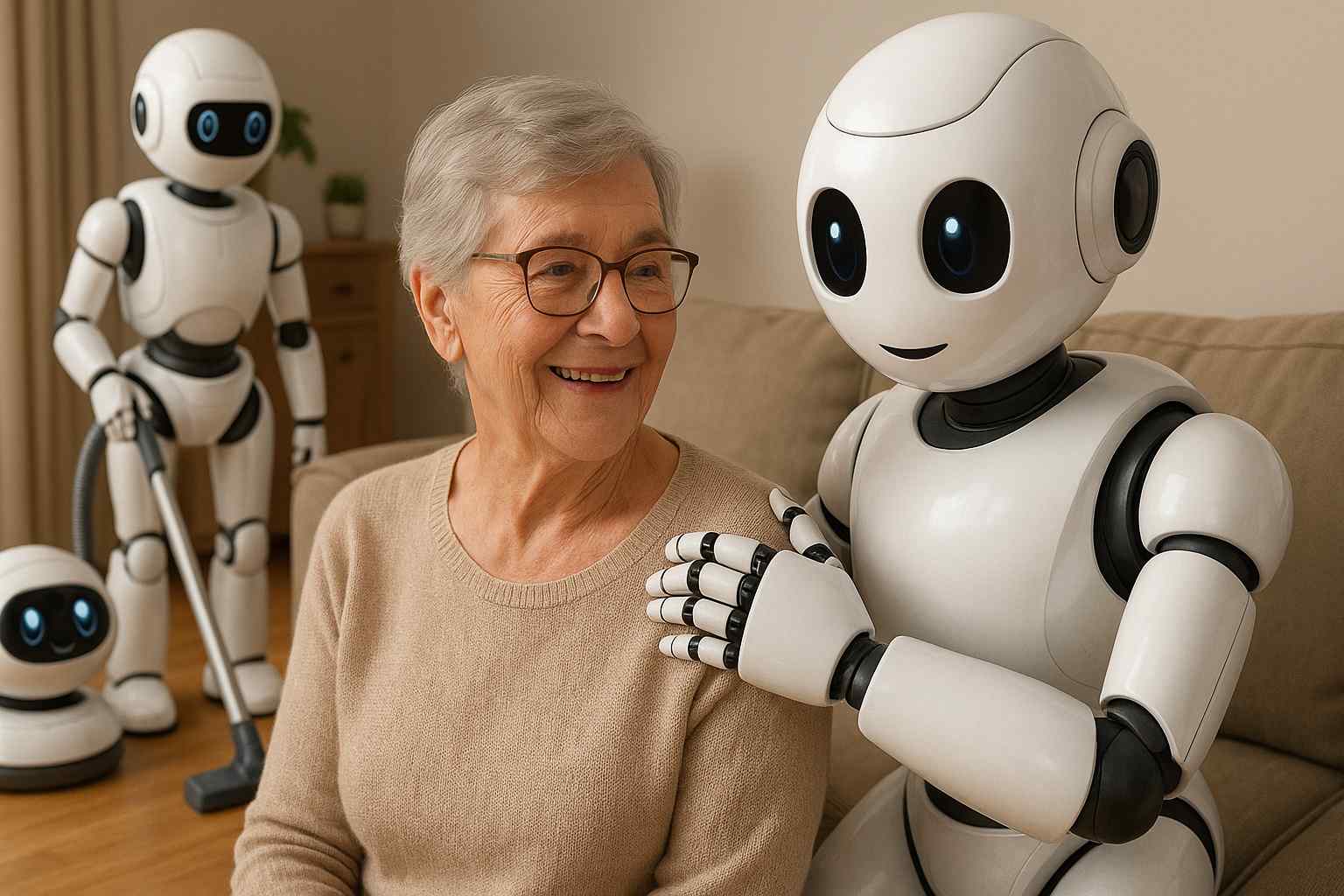Once science fiction, domestic robots are now becoming part of everyday life. From automating tedious chores to providing emotional support, these machines are transforming how people manage homes and care for loved ones. Advances in artificial intelligence and robotics have enabled innovative solutions that help save time, improve safety, and offer companionship, all while becoming increasingly accessible and affordable.
1. Robotic Vacuum Cleaners
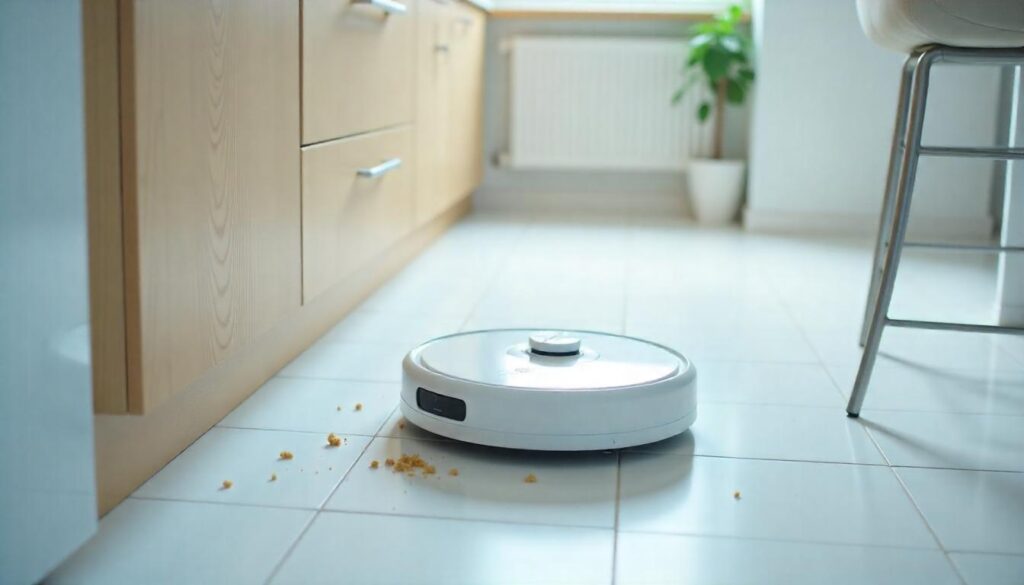
Robotic vacuum cleaners like the Roomba have redefined household cleaning. Equipped with sensors and AI algorithms, they navigate rooms, avoid obstacles, and automatically return to charging stations. Newer models, such as the Roborock S8 Pro Ultra, can mop floors, empty dust bins, and map multi-story layouts, significantly reducing human effort.
Compared to traditional vacuuming, robotic vacuums save hours weekly and can operate while residents are away. While early models struggled on rugs or dark floors, current iterations handle diverse surfaces seamlessly. Brands like iRobot and Ecovacs continue to push boundaries, adding smart home integration and voice control compatibility with assistants like Alexa.
Though they don’t replace deep cleaning entirely, robotic vacuums are invaluable for routine upkeep, especially for busy individuals or elderly people who might struggle with heavy equipment.
- Learn more about how robotic vacuums work from Consumer Reports.
2. Robot Mops
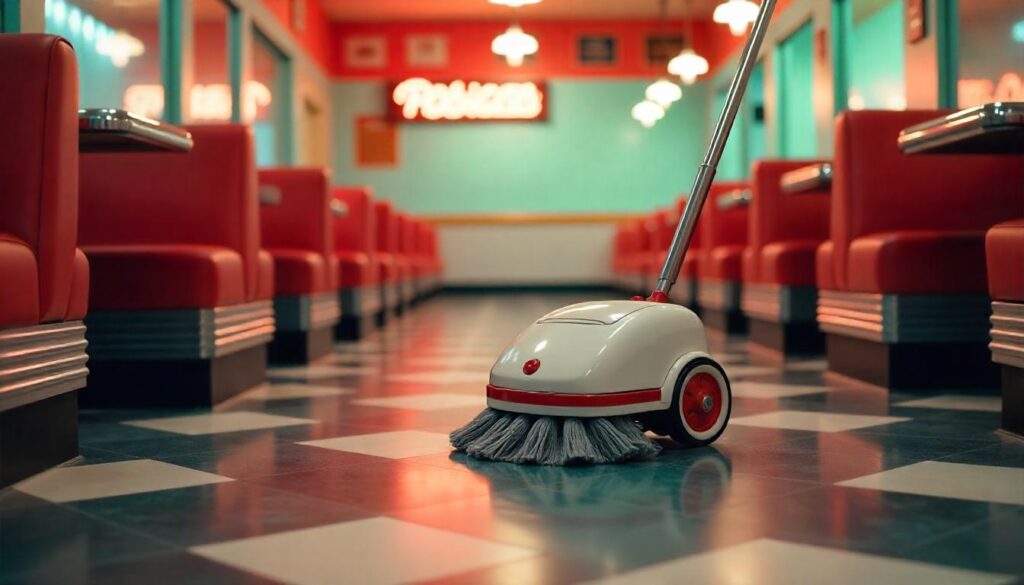
Robotic mops such as the Braava Jet series have become an essential complement to robotic vacuums. These machines dispense water or cleaning solution and use vibrating pads to scrub hard surfaces. Higher-end devices detect floor types and adjust water usage accordingly, protecting delicate surfaces like hardwood.
Unlike vacuuming, mopping demands more water control and thorough dirt removal, but robots have evolved impressively. Models like Narwal Freo even clean and dry their mop heads automatically, reducing manual intervention. This is particularly useful in households with children or pets, where spills and stains are frequent.
While robotic mops might require occasional maintenance and refilling of tanks, they eliminate the physical strain of mopping, making them especially helpful for older adults or people with mobility challenges.
- Find a detailed comparison of robot mops on Wired.
3. Robotic Lawn Mowers
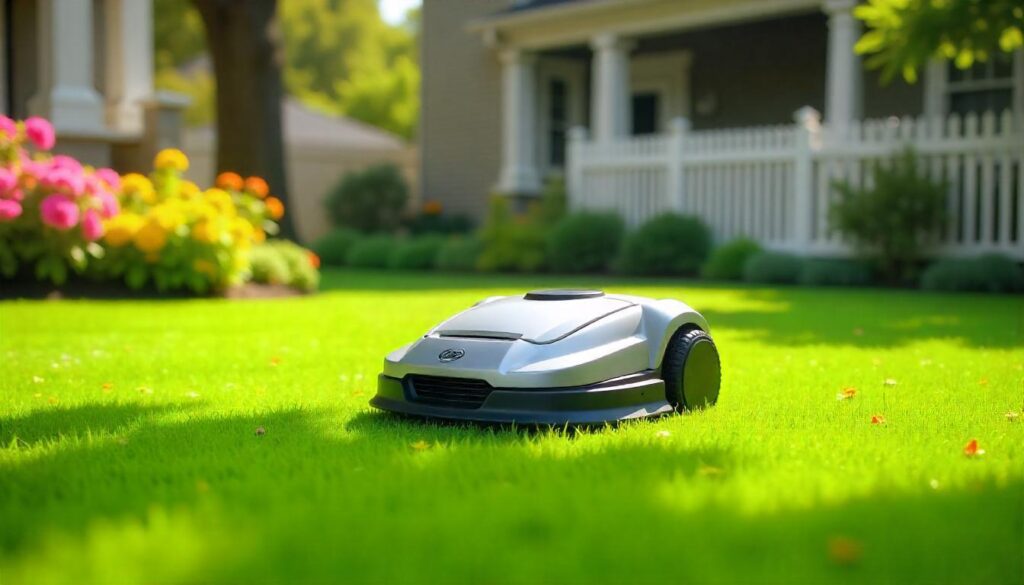
Robotic lawn mowers, such as the Husqvarna Automower series, autonomously trim grass, maintaining a consistently manicured lawn. These devices navigate using boundary wires, GPS, or camera systems to avoid obstacles and ensure complete coverage.
Compared to traditional mowers, they offer quieter operation, lower energy consumption, and the convenience of hands-free lawn care. The latest models are even equipped with theft protection and weather sensors, pausing operation during rain.
For homeowners with large properties or elderly individuals who might find lawn maintenance physically taxing, robotic mowers can be transformative. However, upfront costs are significant, often ranging from $600 to over $3,000.
- Explore insights into robotic mowers in this CNET article.
4. Robotic Window Cleaners
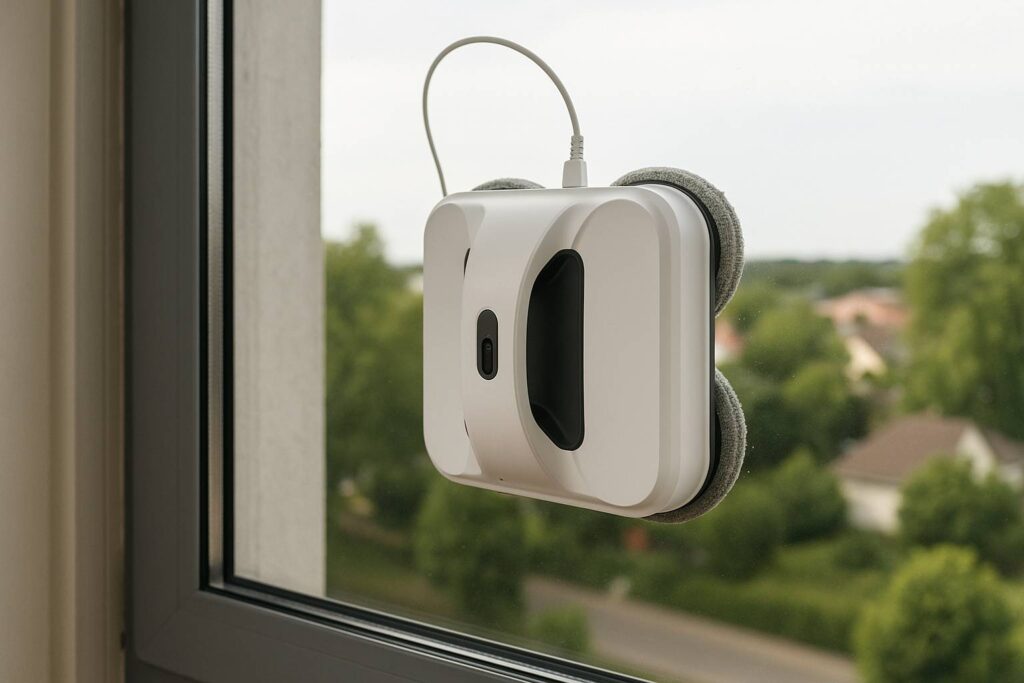
Robotic window cleaners like the Hobot series use suction or magnets to adhere to glass surfaces, cleaning both inside and outside windows. They’re especially popular in homes with large glass facades or high-rise apartments where manual cleaning is risky.
These devices follow systematic paths, spraying cleaning fluid and wiping away grime. Compared to traditional methods, they reduce the need for ladders or extension poles, improving safety and convenience.
Models vary in capability; higher-end versions adapt to different glass thicknesses and provide edge detection for frameless windows. Although some streaking may occur, most users find robots dramatically reduce the workload.
- Check out a review of top robotic window cleaners at TechRadar.
5. Social Companion Robots

Social companion robots like ElliQ and Paro, the therapeutic seal, are designed to provide conversation, entertainment, and emotional support, particularly for the elderly. ElliQ engages users in dialogue, suggests activities, and even reminds them to hydrate or take medication.
Paro, on the other hand, is a robotic baby seal used in dementia care and therapy sessions to reduce anxiety and loneliness. Its soft fur, realistic movements, and responses to touch help evoke positive emotions.
These robots don’t replace human interaction but can supplement it, improving mental health and reducing feelings of isolation. For elderly individuals living alone, they’re a valuable tool for maintaining emotional well-being.
- Learn about ElliQ’s role in elderly care on The Verge.
6. Robotic Personal Assistants
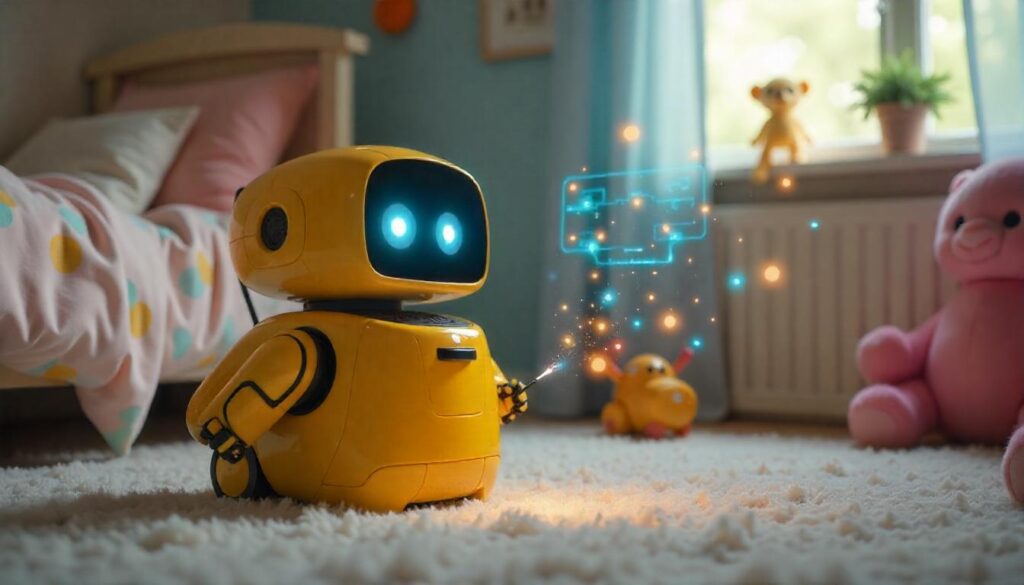
Beyond social interaction, Amazon’s robots like Temi and Astro serve as mobile personal assistants. They can follow users around the house, carry small objects, play music, and display video calls on their integrated screens.
Unlike stationary smart speakers, these robots navigate autonomously, making them especially helpful for users with mobility issues. Some models integrate with smart home systems, controlling lights, thermostats, and security cameras.
However, privacy concerns linger, as mobile robots equipped with cameras and microphones could inadvertently record sensitive information. Still, for individuals needing assistance moving about the home or communicating hands-free, robotic personal assistants are increasingly attractive.
- Read a comparison of personal assistant robots on Digital Trends.
7. Robotic Exoskeletons for Elderly Mobility

Robotic exoskeletons like the Hyundai Vest Exoskeleton and the ReWalk system help individuals with reduced mobility by supporting joints and muscles during walking or standing. While often associated with rehabilitation clinics, lighter models are entering home use for elderly individuals.
These systems detect user movements and provide motorized assistance, reducing fatigue and fall risks. Compared to wheelchairs or walkers, exoskeletons enable more natural motion and preserve muscle strength.
Cost remains a barrier, with devices ranging from $5,000 to over $70,000. However, they represent a profound shift in elderly care, offering independence and improved quality of life.
- Dive deeper into exoskeleton technology via MIT Technology Review.
8. Robotic Pet Companions
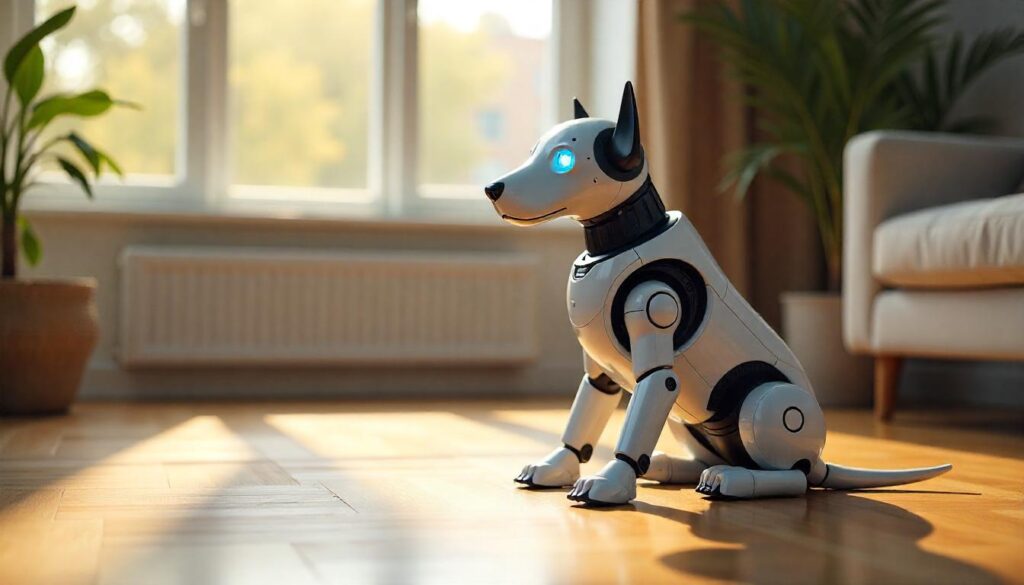
Robotic pets like Sony’s Aibo provide companionship without the demands of feeding, cleaning, or vet visits. Aibo recognizes faces, learns behaviors, and reacts to petting and voice commands, offering a lifelike pet experience.
For elderly individuals who love animals but can’t manage a live pet, robotic companions reduce loneliness and foster joy. Studies show interactions with robotic pets can lower blood pressure and decrease stress levels.
While lacking true emotion, these robots effectively mimic affection and playful behavior. They’re a growing trend in elder care facilities and private homes alike.
- Learn more about robotic pets from National Geographic.
9. Automated Medication Dispensers

Though not strictly robots in form, smart medication dispensers like Hero or Philips Medication Dispensing Service use robotic mechanics to sort, dispense, and remind users to take medications. These devices significantly improve medication adherence, a critical issue for seniors managing multiple prescriptions.
Unlike traditional pill boxes, these machines track doses, send alerts to caregivers, and prevent accidental double-dosing. The dispensers can accommodate complex regimens and notify family members or healthcare providers if doses are missed.
For elderly individuals living independently, automated dispensers offer safety and peace of mind, helping avoid hospitalizations due to medication errors.
- Explore an overview of smart dispensers on The New York Times.
10. Robot Chef Assistants
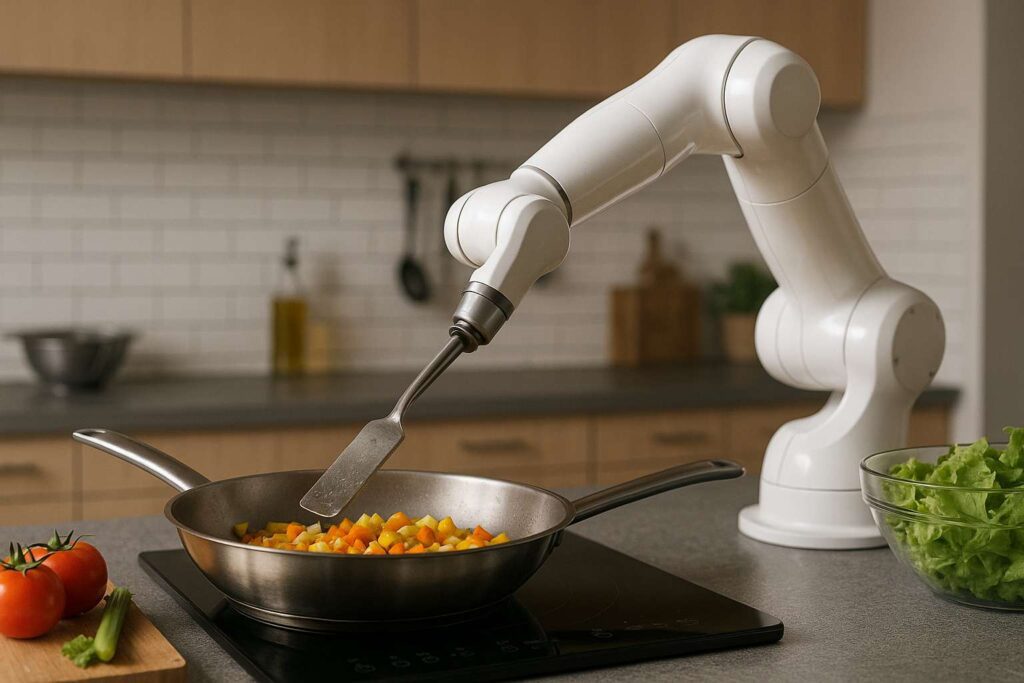
Kitchen robots like Moley Robotics’ Chef Robot aim to automate meal preparation. This robotic kitchen includes articulated arms capable of cooking hundreds of recipes with precision. Some models can chop, stir, and even clean up afterward.
While fully autonomous robot chefs remain expensive and rare, simpler devices like Suvie automate portions of meal prep by cooking pre-packaged ingredients to perfection. Compared to human cooking, these robots offer consistency and time savings, though they’re limited in creativity.
Such technology could be invaluable for elderly individuals who struggle with cooking yet wish to enjoy home-cooked meals safely.
- Check out Moley’s chef robot on BBC News.
11. Robotic Security Monitors

Domestic security robots, such as Samsung’s Ballie or Moorebot Scout, patrol homes, monitoring for intruders, fire hazards, or medical emergencies. Equipped with cameras, motion sensors, and AI, they can detect unusual activity and alert homeowners or emergency services.
Compared to stationary security cameras, robots offer dynamic coverage, inspecting areas as needed. Elderly users living alone may feel safer knowing a robot can check for noises or monitor for falls.
However, privacy concerns persist due to always-on cameras and microphones. Despite this, robotic security solutions are an emerging layer of smart home protection.
- Read about Samsung Ballie’s potential on Engadget.
12. Bathing Assistance Robots
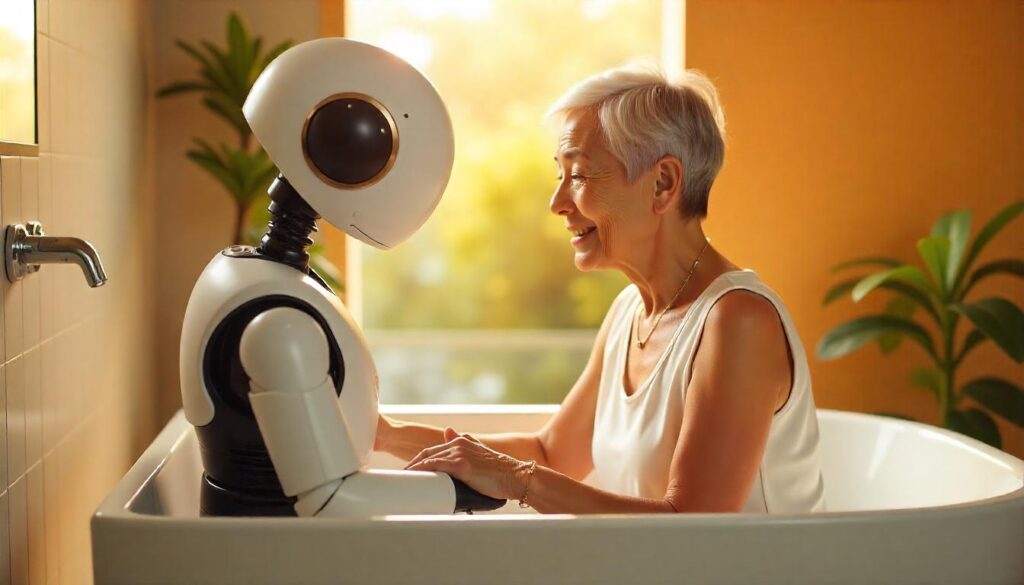
Robotic bathing systems, like Japan’s Care Assist Robot, help elderly individuals bathe safely and comfortably. These systems support lifting, washing, and rinsing, reducing strain for both users and caregivers.
Compared to human-assisted baths, robots offer privacy and dignity while ensuring thorough cleaning. Though mainly found in care facilities, there’s growing interest in bringing them into private homes for seniors wanting to age in place.
Challenges include high costs and the need for bathroom modifications. Still, robotic bath systems represent significant progress in elder care technology.
- Learn about Japan’s robotic bathing systems from Japan Times.
13. Robotic Grocery Carriers
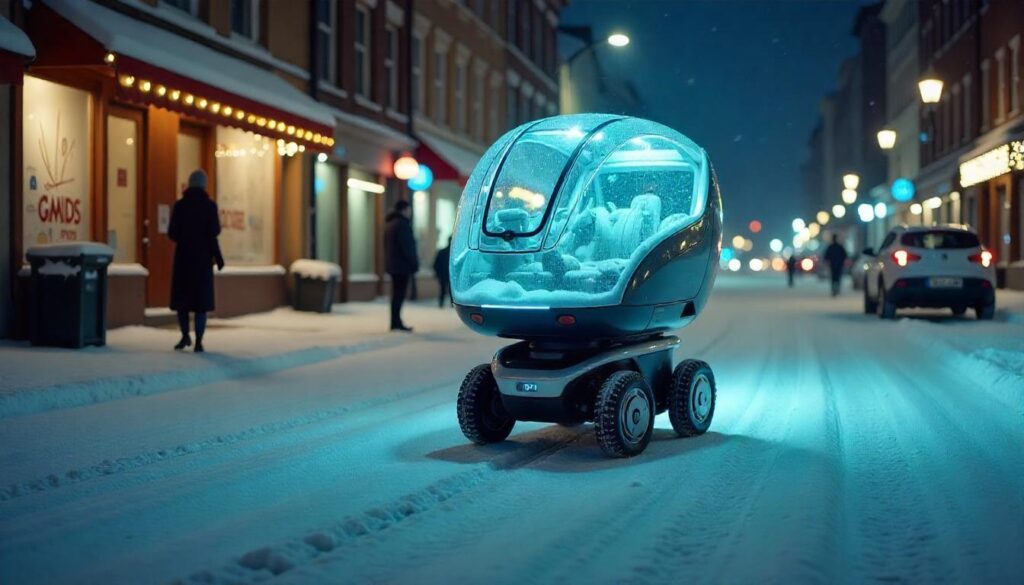
For elderly individuals, shopping and carrying groceries can be physically taxing. Robots like Gita by Piaggio follow users and carry up to 40 pounds of goods, freeing users’ hands and reducing physical strain.
Unlike simple carts, robotic carriers use computer vision and sensors to maintain a safe following distance, even navigating crowded sidewalks. They’re rechargeable, weather-resistant, and increasingly popular in urban environments.
While still expensive (Gita costs about $3,250), such robots enable greater independence for seniors wishing to shop or stroll outdoors without a burden.
- See a review of the Gita on CNN.
14. Robotic Bed Companions

Robots like Somnox are designed to aid sleep by mimicking breathing patterns. Users cuddle the device, which expands and contracts rhythmically, helping calm anxiety and induce restful sleep. This can be beneficial for elderly individuals who suffer from insomnia or anxiety.
Unlike traditional sleep aids, robotic companions offer a non-pharmaceutical approach, reducing reliance on medications. However, they may not suit everyone, especially those sensitive to device noises or vibrations.
Research continues on how effective such robots are compared to cognitive behavioral therapy for sleep disorders.
- Explore Somnox’s sleep robot on The Guardian.
15. Smart Robotic Toilets
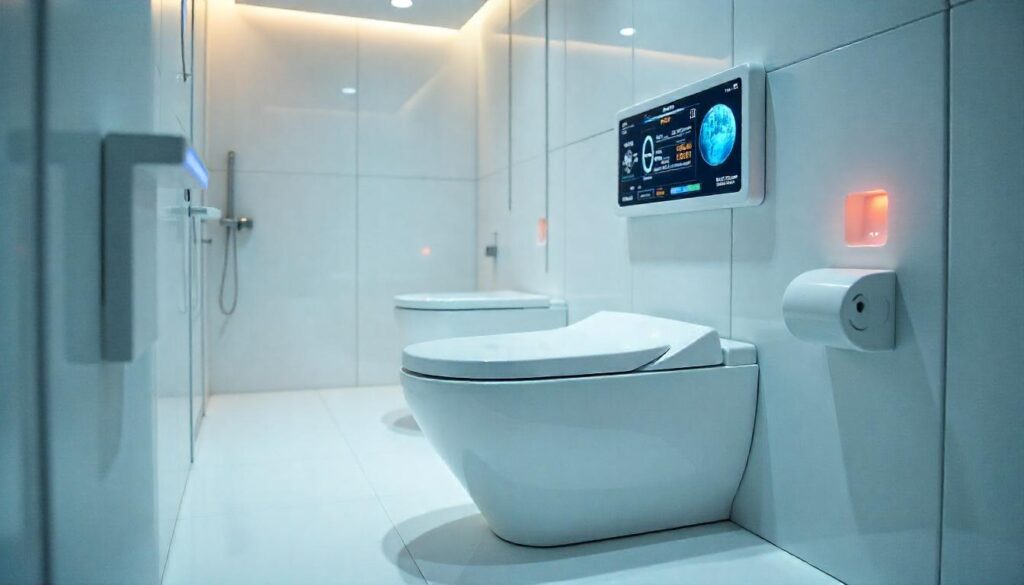
Robotic toilets like Toto’s Neorest series go far beyond flushing. They feature automated lids, bidet functions, drying, and even health monitoring, including urine analysis for potential health indicators.
For elderly individuals with limited mobility, these toilets reduce the need for physical strain and maintain personal hygiene without external assistance. Compared to conventional toilets, they’re more hygienic and offer dignity and comfort.
While costs can exceed $5,000, smart toilets represent the future of bathroom technology, integrating robotics with health monitoring and daily convenience.
- Learn about smart toilets from The Washington Post.
Disclaimer: This article is for informational purposes only and does not constitute medical, financial, or professional advice. Please consult appropriate professionals for personalized recommendations.

